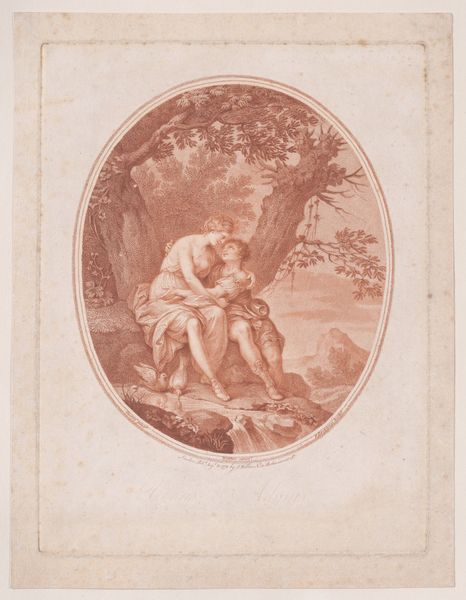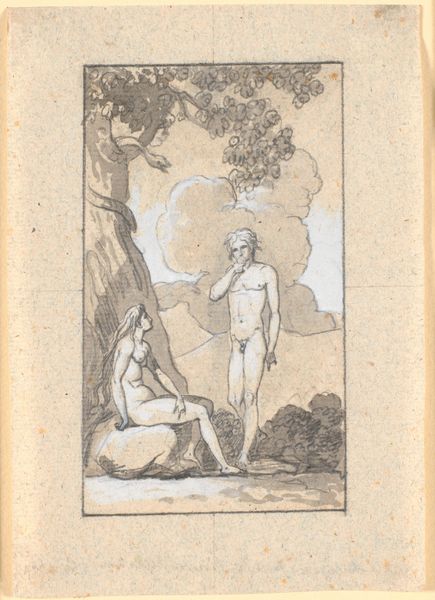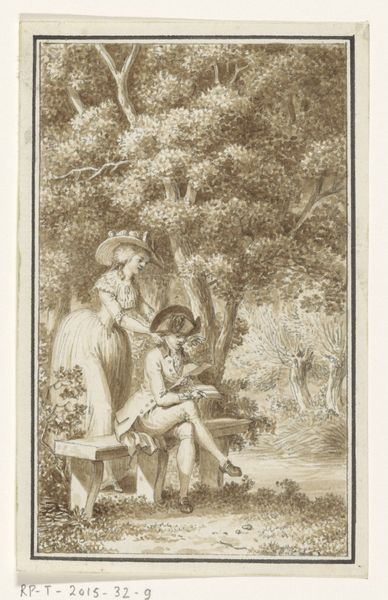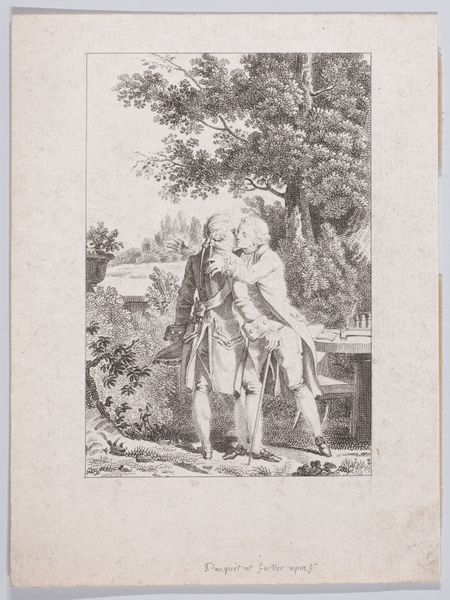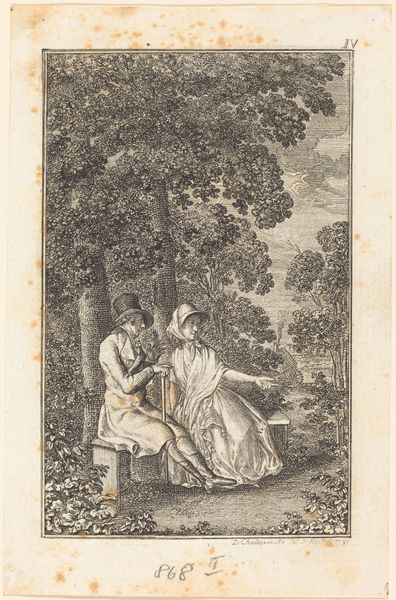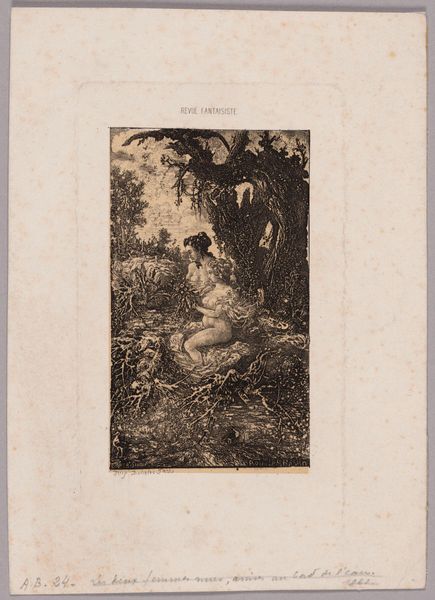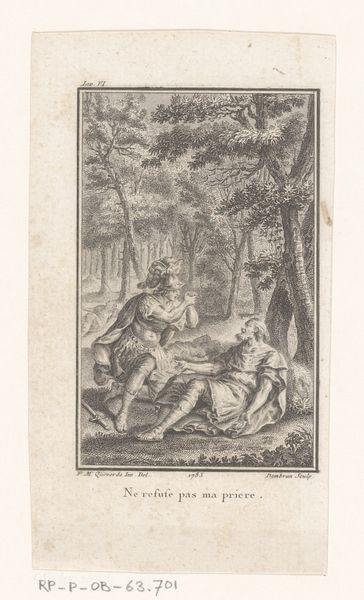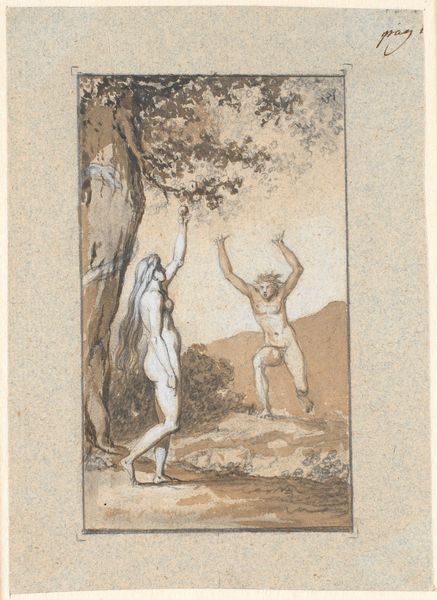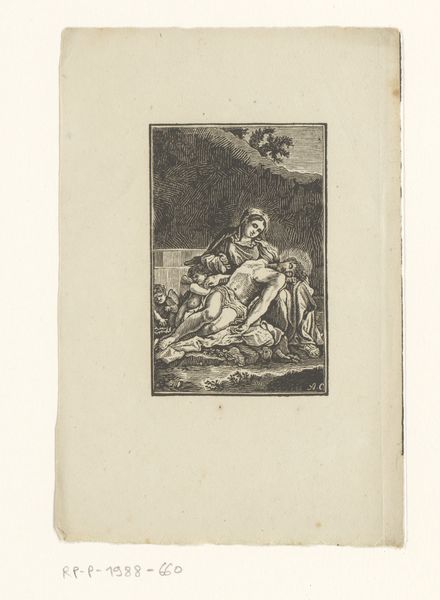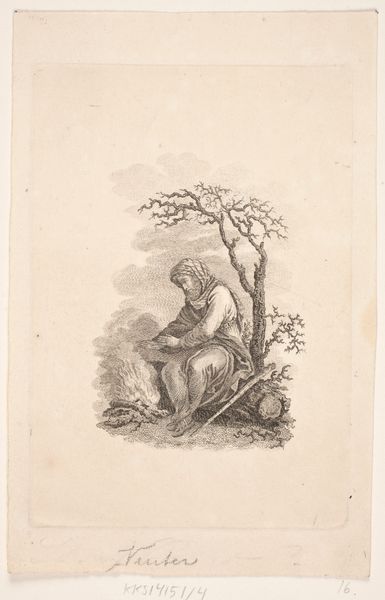
drawing, print
#
portrait
#
drawing
# print
#
landscape
#
romanticism
#
genre-painting
Dimensions: Sheet (Trimmed): 16 5/8 × 12 11/16 in. (42.3 × 32.3 cm)
Copyright: Public Domain
This lithograph, The Troubadour, was created by Noël Frères, sometime between 1800 and 1850, and is now housed at the Metropolitan Museum of Art. The eye is immediately drawn to the figure of the troubadour, centrally placed and softly lit, set against a backdrop of a dense, darker forest. Notice how Frères uses the contrast between light and shadow to create a sense of depth and romantic mystery. The composition employs a classical structure, with the main figure arranged in a pyramidal form, lending a sense of stability and balance. However, this stability is subtly undermined by the troubadour's melancholic expression and his somewhat disheveled appearance. Consider this: how does the artist use the semiotic language of Romanticism, with its emphasis on emotion, individualism, and the beauty of nature? The image operates within a system of signs, where the troubadour figure embodies notions of artistic genius, wandering, and perhaps even a critique of societal norms. The forest, acting as both a literal and metaphorical space, represents the inner world of the artist. Here, Frères invites us to interpret the interplay between these visual elements.
Comments
No comments
Be the first to comment and join the conversation on the ultimate creative platform.
